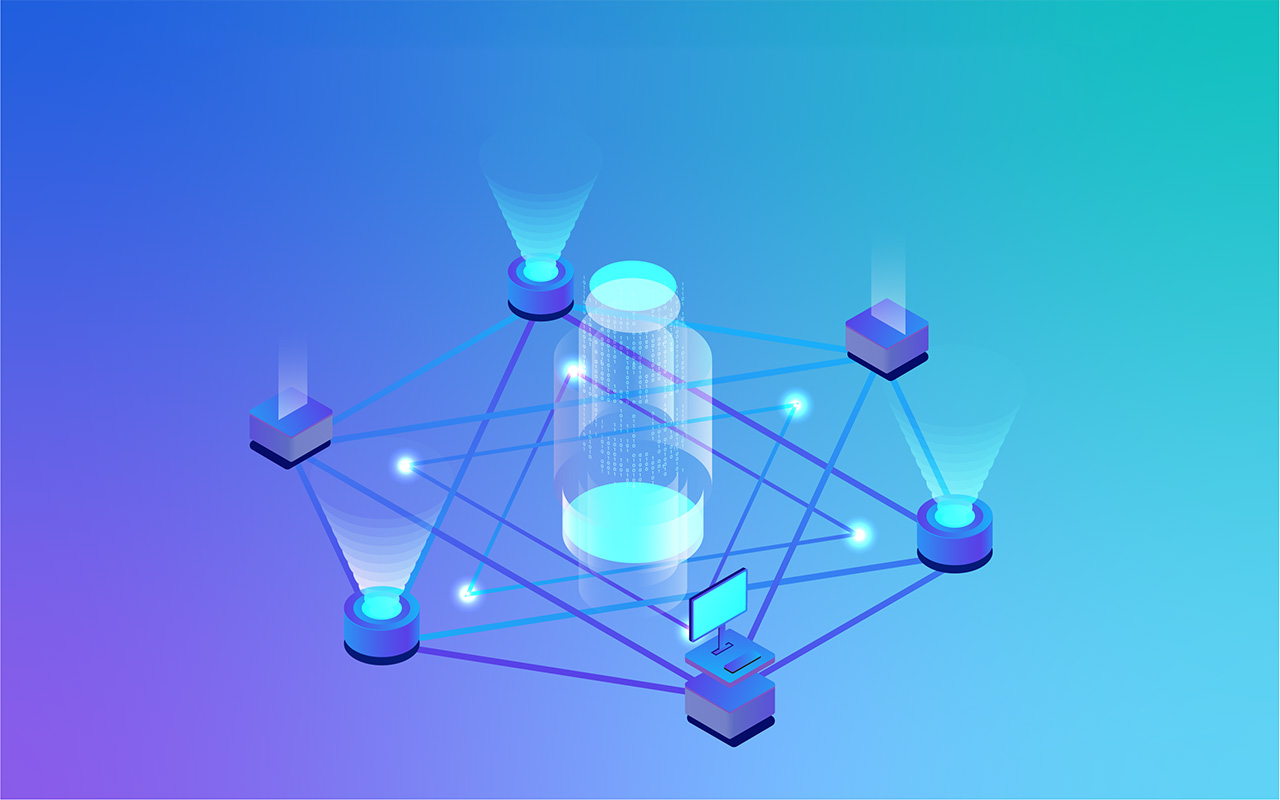The majority of internet users now understand what a blockchain is, and the number of blockchains continues to grow. The world desperately needs a way to connect these disparate blockchains and spur significant innovation. “Blockchain interoperability” is a term for the ability of multiple blockchains to communicate with each other.
As some may believe, blockchains are not necessarily interchangeable with one another. It is important to keep in mind that each chain has its own unique set of applications. Each of these blockchains was created for a different reason by its creators. To make even better projects, there is a need to combine the strengths of different blockchains.

The rate at which blockchains are being developed has accelerated, and some industries and environments require specific use cases for their blockchains. This rapidity has resulted in innovative thinking, one of which is cross-chain technology.
Cross-Chains Technology
Cross-Chain technology is quickly replacing traditional methods of achieving blockchain interoperability. Cross-chain simply refers to transactions that occur between two separate blockchains. It can be thought of as a type of interaction that occurs between two different blockchains.

The most commonly used blockchains, such as Bitcoin and Ethereum, operate in their own ecosystems. They have gained widespread use as a result of the benefits they provide, but this also means that each ecosystem has its own set of issues. People have found it difficult to reap the full benefits of blockchains due to the fact that they have separate benefits but exist separately. Cross-chain technologies exist to address this integration issue and work to bridge the gap between different ecosystems, allowing for easier communication between blockchains. Polkadot, Wanchain, and Cosmos are some examples of cross-chain technology projects. Cross-chain technology allows for greater scalability than current blockchain mechanisms. Because this technology allows users to interact with multiple blockchain networks, it is now possible to take advantage of the speed of multiple blockchains, which improves scalability.
The Importance of Blockchain Interoperability
The success of blockchain technologies that will lead to mass adoption may hinge on blockchain interoperability and the amount of interaction that occurs between different blockchains. The transfer of information and value between blockchains should be simple, but this is not the case right now due to a lack of interoperability factors. Projects are being developed to improve the transfer of information and value between blockchains without the use of a third party or intermediary.
The success of blockchain interoperability will go a long way toward eliminating these third parties, which are more akin to centralized systems than the decentralized future that the world should be heading towards.
Diverse functionalities will enable people to make payments across multiple blockchains, and that is why a fully interoperable blockchain world is the next step in building the future. Other benefits include:
- It facilitates data sharing between networks, which strengthens the case for blockchain technology.
- The future can arrive much faster if different blockchains communicate effectively with one another.
- There will be more integrations, which means more people will be able to find them and use them. Existing projects will be able to improve even more because they can connect to other blockchains.
- Cross-chain transactions will be greatly simplified.
- Even more decentralized ecosystems
Blockchain Interoperability Projects
As can be seen, there is an increased demand for interoperability solutions, and as such, there are multiple projects underway to create supply for the demand. The number of projects is steadily increasing. Some of the top projects that are being created or exist to enhance blockchain interoperability include:
- Polkadot Blockchain
Dr. Gavin Wood, the co-founder of Ethereum and the creator of the Solidity programming language, founded Polkadot in 2016. Polkadot was made because there are so many different blockchains and there isn’t a lot of communication between them. Polkadot makes it possible for different blockchains to work together.

Simply put, it enables any blockchain, private or public, to communicate with one another in a trustless manner through a single network. A smart contract event on the ETH network triggering a payment on the BTC network is an example of it in action, as is a cross-chain swap of LTC for XRP using smart contracts with no intermediary. It’s also known as the “Internet of Blockchains.” Developers use Polkdot Relay Chains, Para Chains, and Bridge Connectors to accomplish this.
- Cosmos Blockchain
Cosmos’ vision is to create a “blockchain internet.” A platform with protocols that allow for interoperability between different blockchains, allowing for the creation of a network of blockchains that can communicate and transact in a decentralized environment. The Inter-Blockchain Communication Protocol allows for these connections.
As evidenced by their developer tools, Cosmos focuses on making blockchains simple to build for anyone. Their compatibility software allows each blockchain to maintain its independence while still transferring value between them. More on Polkadot vs. Comos can be found here.
Blocknet, Aion Online, and Wanchain are some of the other blockchain interoperability projects.
Challenges to Blockchain Interoperability and Solutions
The most difficult aspect of Blockchain Interoperability is that there are so many different blockchains, none of which use the same language. Different blockchains have different levels of usage and expertise for smart contracts. The creation of a technology that serves as a universal communication channel between multiple blockchains could be a solution to this problem. Multi-Chain Frameworks can be used in this situation.
Multi-Chain frameworks act as an open environment into which blockchains can be plugged. Blockchains can become part of a standardized ecosystem and share information more easily with Multi-Chain frameworks. When it comes to blockchain interoperability, they have a lot to offer.
Other options for achieving some semblance of interoperability include:
Sidechains
A sidechain is a type of blockchain that can communicate with another. Sidechains are divided into two categories. It could be a case of two independent blockchains, each of which is equal and, more often than not, has its own native token. The other type of sidechain is one in which the two blockchains are more interdependent, with one acting as the parent chain and the other as the child chain. Typically, the parent chain provides all of the assets to the child blockchain. Because they require a trusted third party, sidechains are difficult to build and are not completely trustless. Loom Network, RSK, and the Solana wormhole are just a few examples.
Notary Schemes
In a notary scheme, a trusted party or group of entities assists participants in blockchain A in determining whether an event in blockchain B occurred and then making changes. The main problem here is that there is centralized trust, which defeats the purpose of decentralization. Binance, Coinbase, and others are examples.
Hashed Timelock Contracts
A timelock contract is a smart contract that executes a transaction at a specific time and is embedded in a blockchain. They mitigate risk by establishing a time-based escrow that requires a pass to unlock. It is primarily used for asset transfers and does not qualify as interoperability in the true sense of the word. Uniswap, Fusion, and other similar programs are examples.It reduces the risk for the other person by setting up a time-based escrow that requires a cryptographic passphrase to unlock.
Existing Blockchain Interoperability Use-Cases that Exist
All the above can sound highly theoretical, so here are some real-world use cases of Blockchain interoperability:
- AVA Network
The AVA network is an open-source platform for developing and deploying DeFi apps and blockchain solutions that can work together in a scalable, interoperable ecosystem. The Avalanche Consensus Protocol has been used to build interoperability between Distributed Ledger Technologies (DLT) networks into the AVA network.
This means that instead of a network with thousands of tokens, there is a platform with thousands of subnetworks, each with its own token, making it easier for them to interact with one another and providing a great example of interoperability.
- Quant Overledger and Oracle Cloud
Quant is the world’s first enterprise-oriented provider of true universal DLT interoperability.” Quant teamed up with Oracle Cloud to run mission-critical business applications on Overledger-powered interoperable blockchains that connect global networks to blockchain-based platforms. Banking institutions can use a set of APIS to cover all aspects of the banking cycle, as an example.
According to Gilbert Verdian, CEO of Quant helps Oracle’s customer banks by providing a single API to all supported blockchains to power interoperability across platforms. Giving clients the freedom and flexibility to use any blockchain technology they want while also allowing them to go cross-platform with just three lines of code. Clients gain market access, new products, and revenue streams without having to deal with the headaches of managing complex blockchain technology stacks.”
Telos and Transledger
Transledger is a blockchain interoperability platform that allows cryptocurrency to be transferred between separate or independent distributed ledger networks. They partnered with the Telos blockchain network to perform fast and secure cross-chain digital asset transactions with its utility token. Different blockchains can interact with one another and perform tasks together thanks to Transledger Inter-Blockchain Communication (IBC).
This section was created with the assistance of this article.
To sum up, the purpose of this article was to shed light on the topic of interoperability. Various advantages have also been discussed, as well as why it is a necessity. Decentralization is the way of the future, and if more work on Blockchain Interoperability can be done, it will be even closer.




Cool stuff. Nice write up Ayo
Thank you very much Desmond